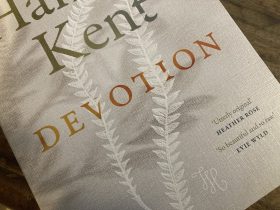Most artists have had a ‘day job’ at some point: Sidney Nolan worked at the Fayrefield Hat factory, Patrick White was a stockman, and Helen Garner worked as a teacher. The economic reality of working as an artist, performer or writer means most people also require a day job to supplement their creative work.
We’ve compiled a list of jobs that can help you make connections and contacts, enrich your practice and support your creative work.
Teaching
Whether you go into teaching for primary or high school kids, or teach your craft to a group of keen adults, teaching is a way to A) develop and deepen your own practice, B) help spread knowledge and skills and C) make some cash. You can go all the way and study to be a primary school art teacher, or hold workshops and classes on whatever your skillset is. Think watercolour painting classes and champagne for a hen’s day, creative writing classes for kids or oil painting for seniors.
Designer
If you’ve got an eye for colour, texture and form, then consider design as an option. While graphic design may require upskilling or extra study, your practical creative skills could come in handy in editorial, publishing or logo design. Interior design or visual merchandising are also areas which require creativity and visual flair.
Read: In defence of day jobs
Gallery tour guide
Ever wanted a behind the scenes look at the inner workings of a gallery? Being a gallery tour guide can be an excellent way to enhance your practice and make valuable contacts in the industry. You’ll often get training on the history and details of the major works in the gallery, plus helpful insights into the gallery-going public. Remember: these positions are often voluntary, but they invariably include free membership, ongoing education and early access to exhibitions.
Corporate curator
Corporations and big businesses are looking towards art works as a cultural and financial investment. Major companies such as Deloitte, Wesfarmers and BHP Billiton all hold significant collections of art, from both contemporary and traditional artists, photographers and sculptors.
If you have an area of specialty developed through your own practice, for example contemporary nature photography or Indigenous art from a specific area, then there might be a role for you in helping businesses choose, purchase and display artworks.
Front of house
Working front of house in a theatre or indie cinema can be an excellent way to access films and plays which you may never have been able to see otherwise. It can also be a helpful way to learn the ins and outs of film distribution and theatre production, especially if you are working in a small theatre where you might do everything from selling tickets, pouring drinks and preparing the stage.
Installer/gallery tech
Also called a gallery technician or art handler, an installer is responsible for moving and placing the artwork within a gallery or exhibition space. This can involve everything from preparing walls and hanging the art itself, to organising audio-visual elements for performance or installation works. They often work closely with the curator and artist to ensure that the work is presented in the best possible light.
Retail
Working in an art supply store or a bookshop can be an excellent way to access the tools of your trade. Both bookstores and art stores often develop loyal customers and build strong communities through book clubs, student programs and visiting authors and artists. A writer can gain valuable insights into the publishing and bookselling process by working in a bookstore (plus make good use of the staff discount) while an artist working in an art supply store can have first access to materials and tools, and make connections with other artists.
Read: An artist’s day job, what is it?
Illustrator
If you are a skilled drawer, try your hand at freelance illustrating. From children’s books and editorial design through to posters, maps and fashion illustration, hand or digitally drawn illustrations are used for a surprisingly large range of projects. Start by creating a basic website showcasing your work, then get your name out there through social media, pitching potential clients and spreading the word through your networks.
Tattoo artist
If you have a steady hand and are not squeamish around blood, then tattoo artistry can be an excellent way to enhance your skills and develop your practice. Clients will work with the tattoo artist to create a unique artwork, which is then tattooed onto the skin using a tattoo gun and ink. You can specialise in particularly styles and techniques, such as vintage, watercolour or tribal tattoos. Particularly skilled and renowned tattoo artists are in high demand with long waitlists, and can charge accordingly.
Read: How to copyright your tattoo
Children’s entertainer
If you are an actor, dancer or performer, then the kids’ party circuit might be the place for you. Magicians, clowns, fairies and face painters all do a roaring trade and it can be an excellent way to practice performing in front of a tough crowd. And don’t think you need to learn to tie complicated balloon animals or tell jokes: parents are looking for something different, so how about tie-dye or mosaic parties, a hip hop party where you teach the kids some moves, or an arts and crafts party? Once you get your party routine down pat, consider expanding to schools, kindergartens, corporate events and festivals too.





